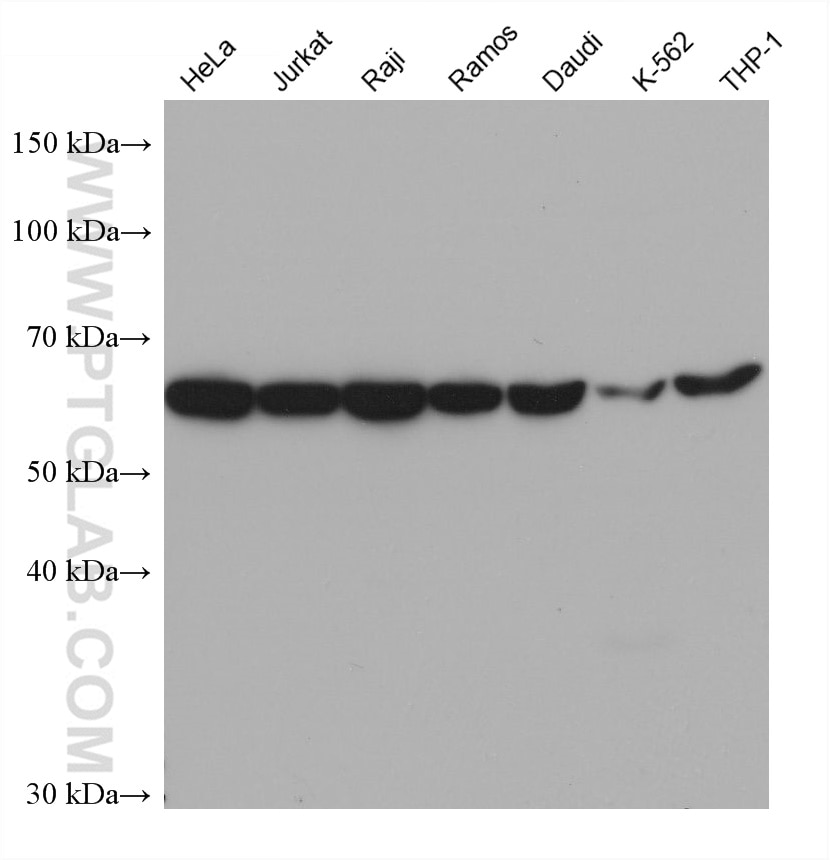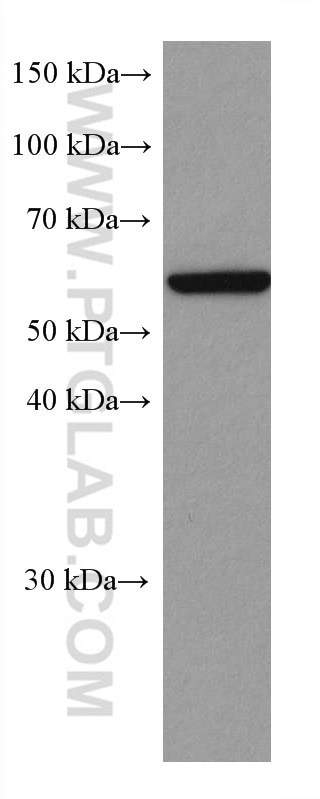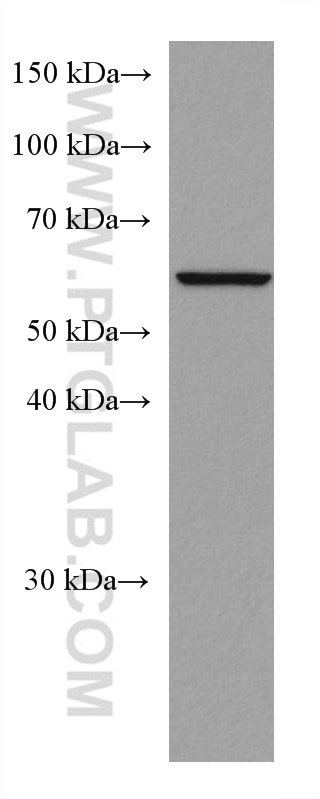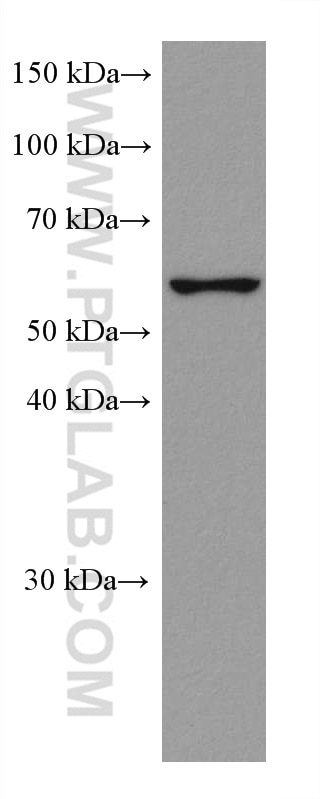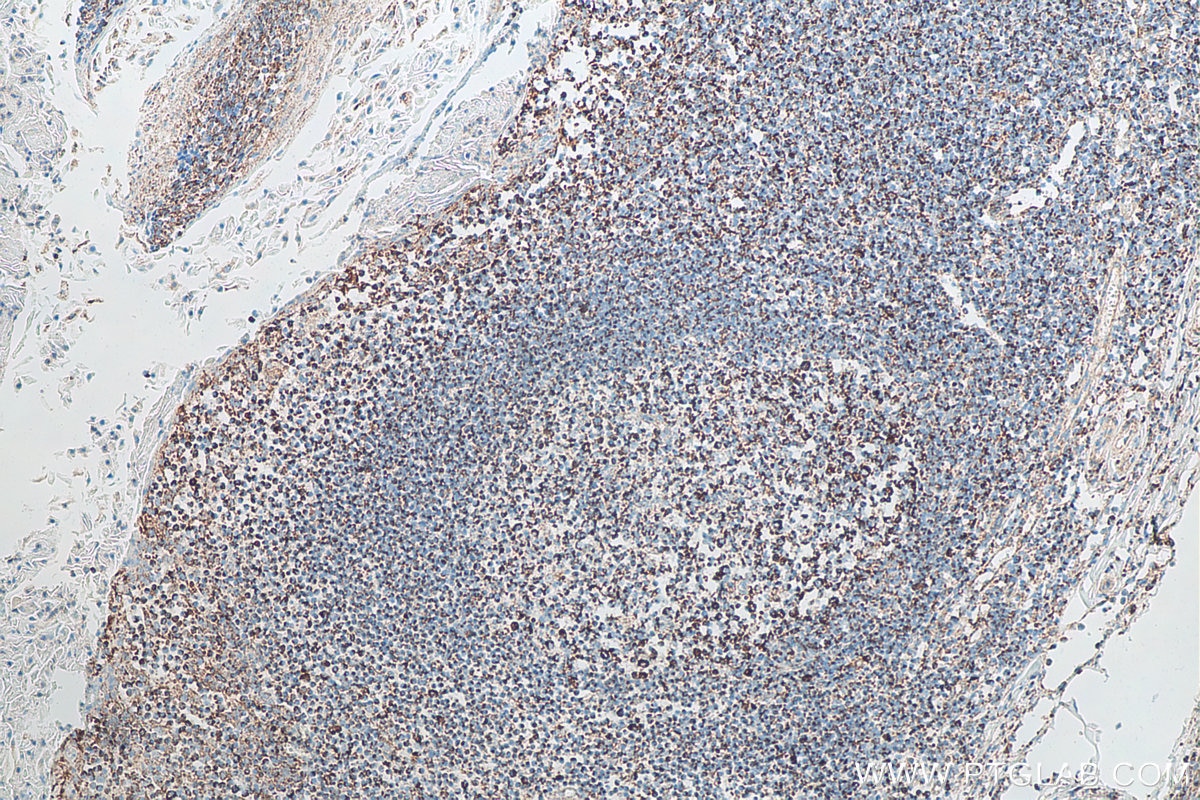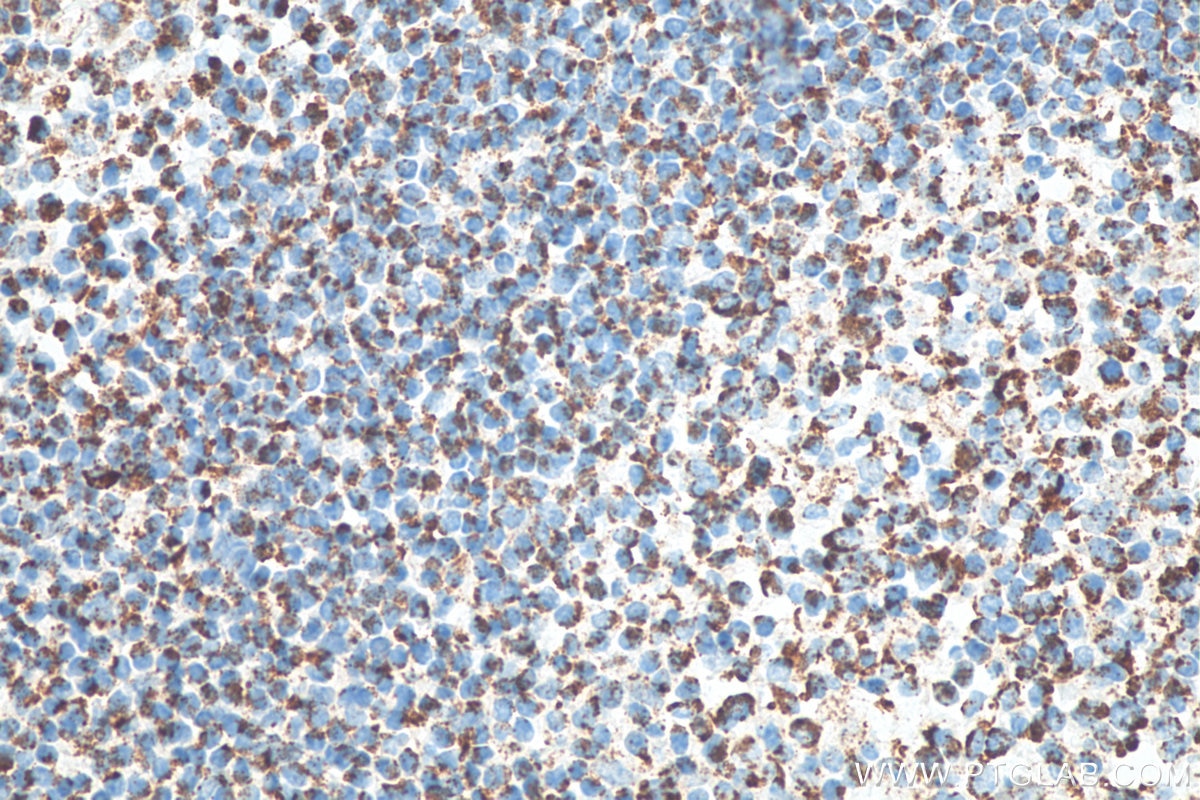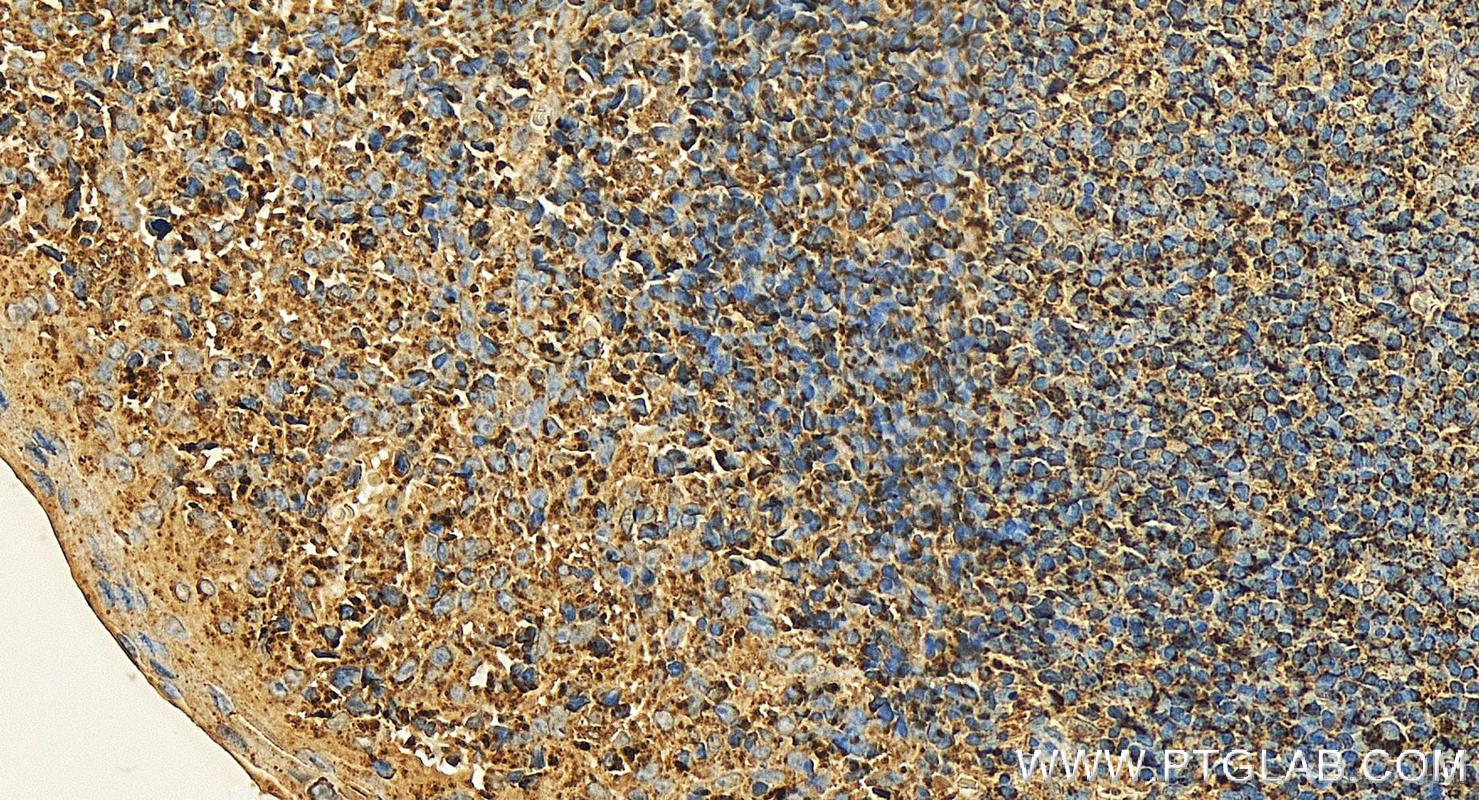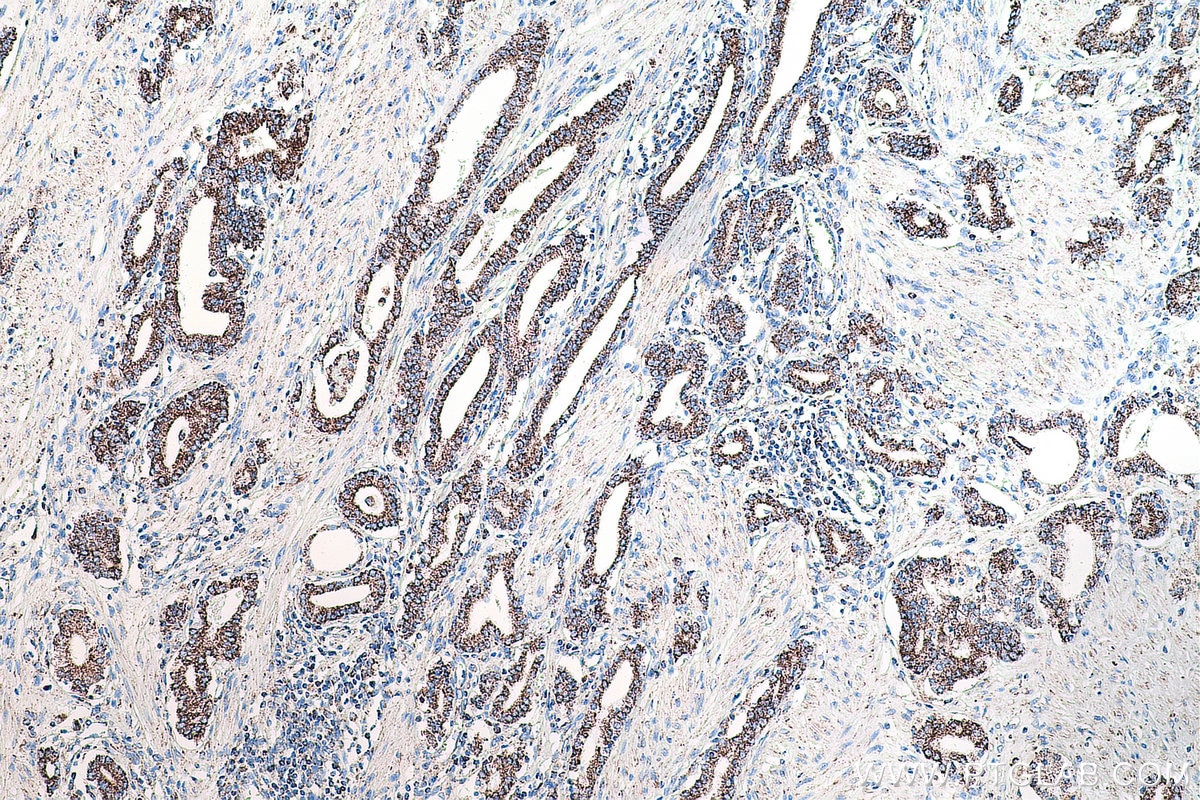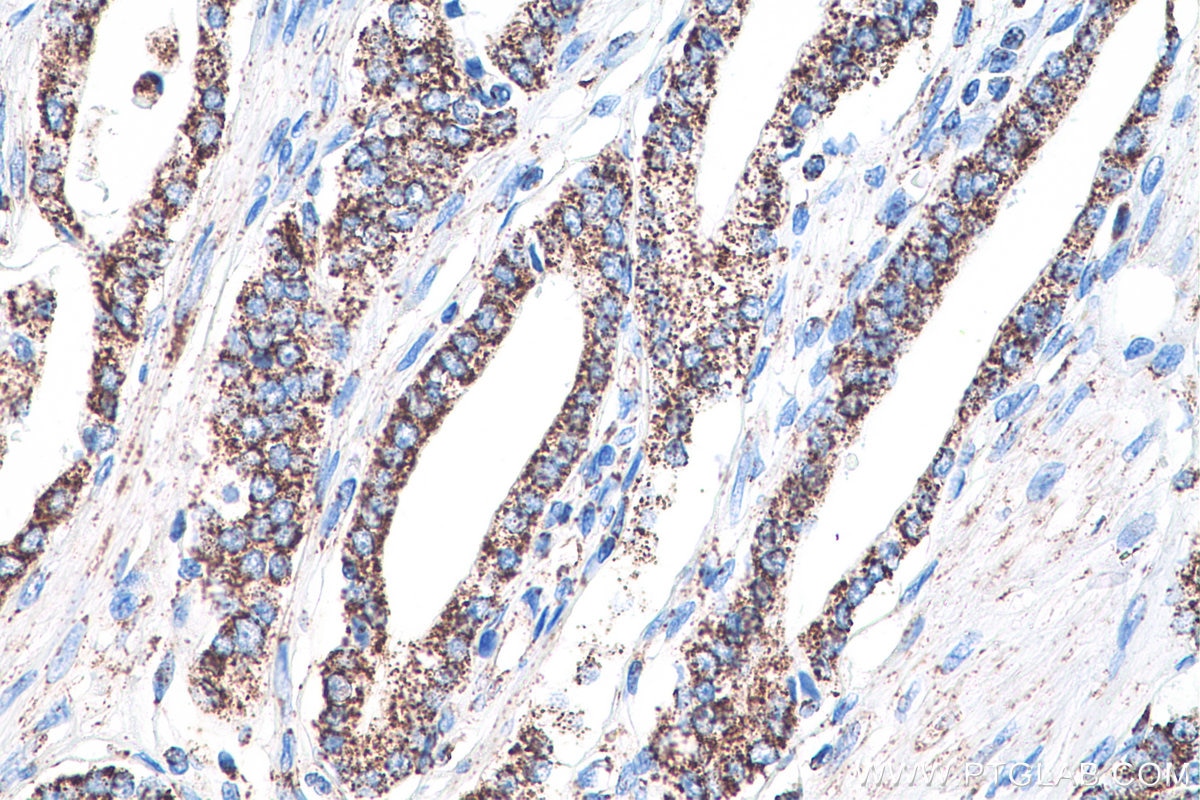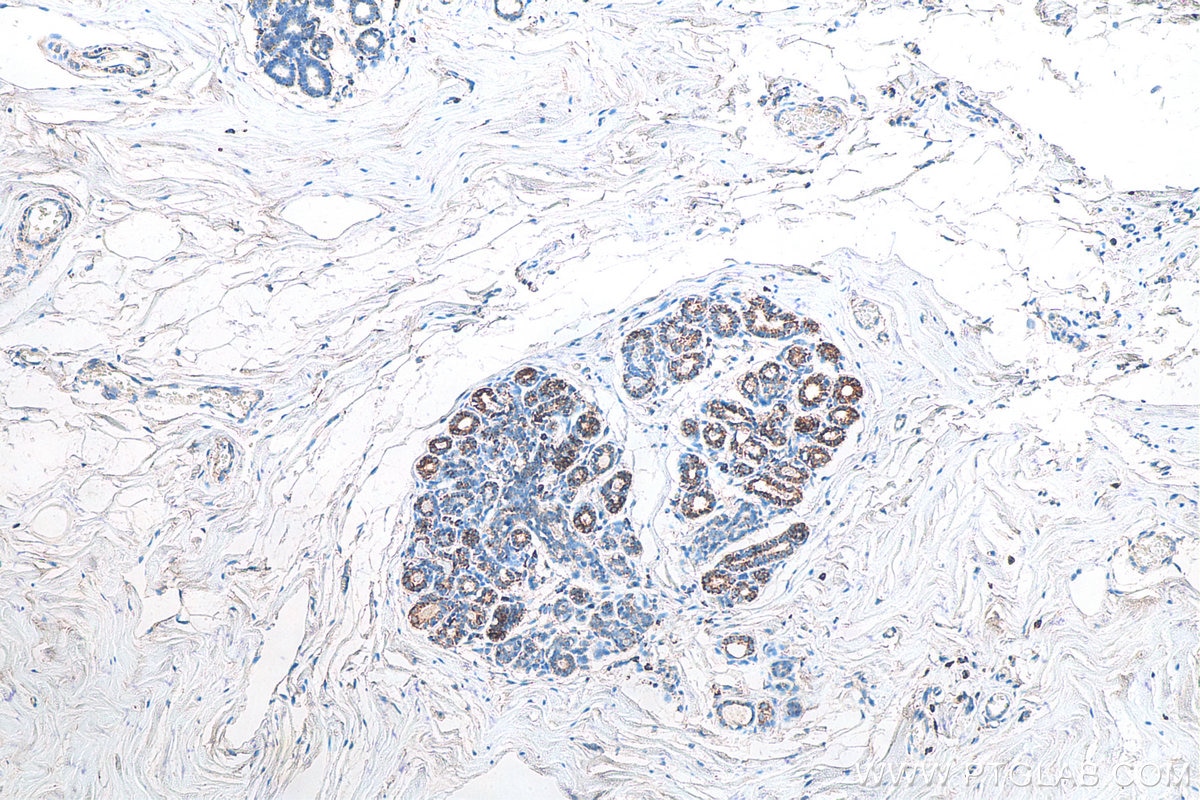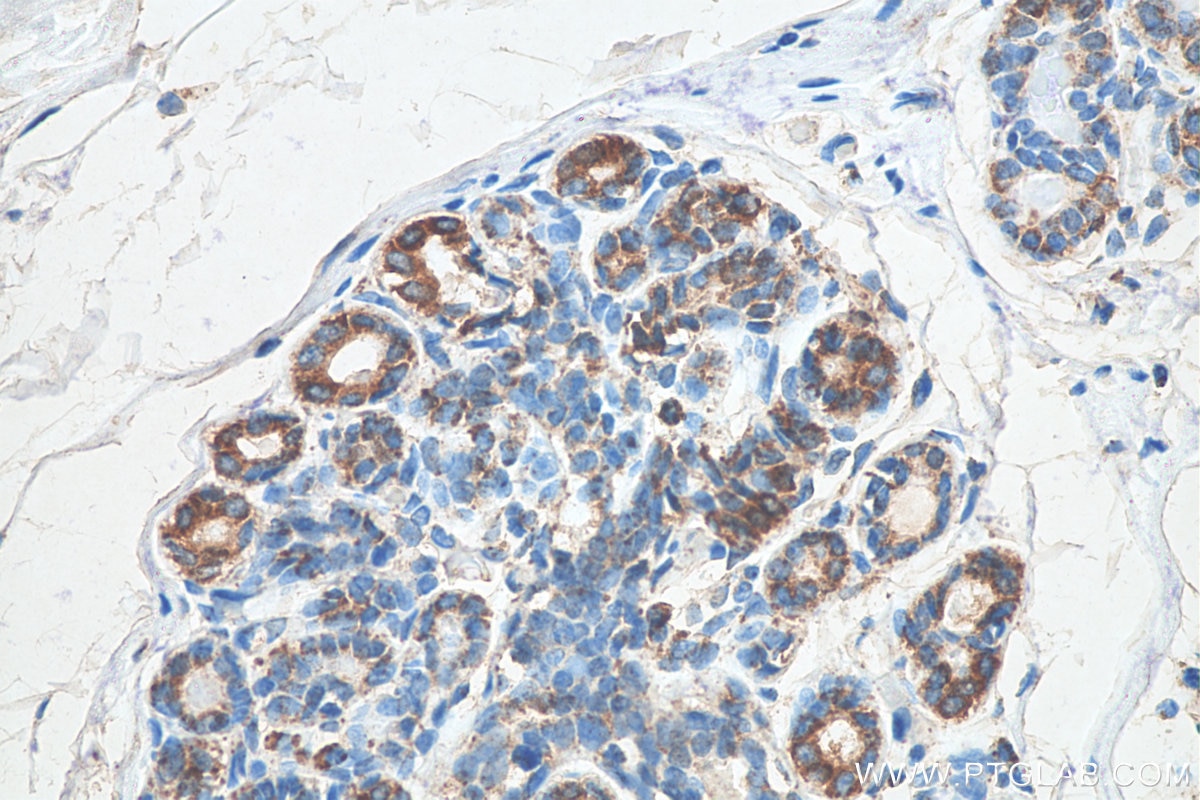- Phare
- Validé par KD/KO
Anticorps Monoclonal anti-CXCR4
CXCR4 Monoclonal Antibody for WB, IHC, ELISA
Hôte / Isotype
Mouse / IgM
Réactivité testée
Humain et plus (1)
Applications
WB, IHC, IF, CoIP, ELISA
Conjugaison
Non conjugué
CloneNo.
4B5E4
N° de cat : 60042-1-Ig
Synonymes
Galerie de données de validation
Applications testées
| Résultats positifs en WB | cellules HeLa, cellules Daudi, cellules Jurkat, cellules K-562, cellules Raji, cellules Ramos, cellules THP-1 |
| Résultats positifs en IHC | tissu d'amygdalite humain, tissu de cancer de la prostate humain, tissu de cancer du sein humain il est suggéré de démasquer l'antigène avec un tampon de TE buffer pH 9.0; (*) À défaut, 'le démasquage de l'antigène peut être 'effectué avec un tampon citrate pH 6,0. |
Dilution recommandée
| Application | Dilution |
|---|---|
| Western Blot (WB) | WB : 1:1000-1:4000 |
| Immunohistochimie (IHC) | IHC : 1:300-1:1200 |
| It is recommended that this reagent should be titrated in each testing system to obtain optimal results. | |
| Sample-dependent, check data in validation data gallery | |
Applications publiées
| KD/KO | See 8 publications below |
| WB | See 45 publications below |
| IHC | See 12 publications below |
| IF | See 16 publications below |
| CoIP | See 2 publications below |
Informations sur le produit
60042-1-Ig cible CXCR4 dans les applications de WB, IHC, IF, CoIP, ELISA et montre une réactivité avec des échantillons Humain
| Réactivité | Humain |
| Réactivité citée | Humain, souris |
| Hôte / Isotype | Mouse / IgM |
| Clonalité | Monoclonal |
| Type | Anticorps |
| Immunogène | CXCR4 Protéine recombinante Ag1528 |
| Nom complet | chemokine (C-X-C motif) receptor 4 |
| Masse moléculaire calculée | 352 aa, 40 kDa |
| Poids moléculaire observé | 60~70 kDa |
| Numéro d’acquisition GenBank | BC020968 |
| Symbole du gène | CXCR4 |
| Identification du gène (NCBI) | 7852 |
| Conjugaison | Non conjugué |
| Forme | Liquide |
| Méthode de purification | Précipitation de l'acide caprylique/du sulfate d'ammonium |
| Tampon de stockage | PBS with 0.02% sodium azide and 50% glycerol |
| Conditions de stockage | Stocker à -20°C. Stable pendant un an après l'expédition. L'aliquotage n'est pas nécessaire pour le stockage à -20oC Les 20ul contiennent 0,1% de BSA. |
Informations générales
C-X-C chemokine receptor type 4 (CXCR4) is a widely expressed G protein-coupled seven-transmembrane receptor. CXCL12/SDF-1 is the biological ligand for CXCR4. The binding of CXCL12 to CXCR4 induces intracellular signaling through several divergent pathways initiating signals related to chemotaxis, cell survival and/or proliferation, increase in intracellular calcium, and gene transcription (PMID: 20484021). CXCR4 also functions as a coreceptor for HIV-1 entry (PMID: 9427609). CXCR4 has a calculated molecular weight of 40 kDa. In addition to the predicted species of 45-47 kDa for glycosylated CXCR4 monomers, due to ubiquitination, dimeration, and different degrees of glycosylation, additional species can also exist and have been reported in some research, including 67 kDa (PMID: 23917520), 55, 67, 87 kDa (PMID: 20028517), 80 kDa (PMID: 10506573), 47, 50, 62, and 98 kDa (PMID: 16204649).
Protocole
| Product Specific Protocols | |
|---|---|
| WB protocol for CXCR4 antibody 60042-1-Ig | Download protocol |
| IHC protocol for CXCR4 antibody 60042-1-Ig | Download protocol |
| Standard Protocols | |
|---|---|
| Click here to view our Standard Protocols |
Publications
| Species | Application | Title |
|---|---|---|
Adv Mater Noninvasive Optogenetics Realized by iPSC-Derived Tentacled Carrier in Alzheimer's Disease Treatment | ||
Adv Sci (Weinh) Mesenchymal Stem Cell Membrane-Camouflaged Liposomes for Biomimetic Delivery of Cyclosporine A for Hepatic Ischemia-Reperfusion Injury Prevention | ||
Nat Commun HIF-1α-PDK1 axis-induced active glycolysis plays an essential role in macrophage migratory capacity. | ||
J Exp Med CXCR4 regulates Plasmodium development in mouse and human hepatocytes.
| ||
Cancer Lett YTHDF1 promotes the osteolytic bone metastasis of breast cancer via inducing EZH2 and CDH11 translation |
Avis
The reviews below have been submitted by verified Proteintech customers who received an incentive for providing their feedback.
FH Rui (Verified Customer) (05-08-2025) | It was not working
|
